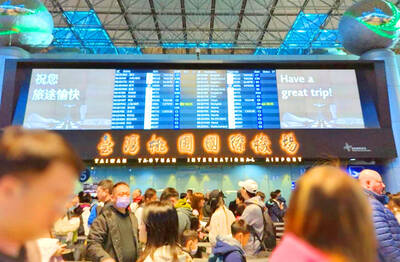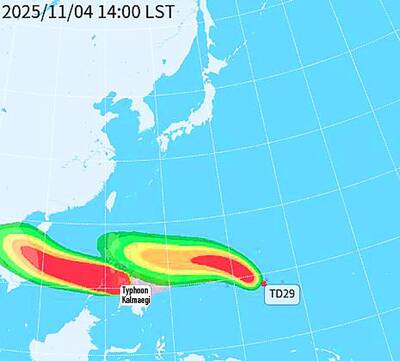The architectural firm that had been selected to design the National Palace Museum’s Southern Branch has withdrawn from the project.
Antoine Predock Architect PC said on Tuesday that it was quitting the design project with immediate effect and billed the museum headquarters in Taipei for NT$40 million (US$1.2 million) in compensation for losses incurred.
The firm had been selected by a competition jury four years ago from a field of six finalists to design the museum in Chiayi County.
Chiayi County officials in charge of cultural affairs said the firm’s unilateral decision to pull out may have been the result of a failure to reach an accommodation with the museum over serious construction delays, design methods and the quality of building materials.
The officials said that if the museum had agreed to the firm’s demands, it would have led to a 30 percent increase in construction costs.
The project could still proceed despite the firm’s withdrawal if the museum were to reopen international bidding for the design and the budget is approved, the officials said.
“The southern branch could still be built by 2011 as scheduled if the construction budget is passed by the Legislative Yuan in time,” they said.
The Executive Yuan approved the construction of the southern branch in 2003, estimating that the branch museum would be built on a 70 hectare site with a total budget of approximately NT$6 billion.
The budget for clearing the land, which included digging an artificial lake, planting trees and installing irrigation and water-drainage systems, is NT$450 million.
The project had been scheduled to be around 20 percent complete by Jan. 7, though the actual completion figure was listed as 11.9 percent. The government has also not approved the project’s annual budget allocation since 2003.
The 60m-tall building was to have been built in the shape of Yushan, and would have been visible to passengers on the high-speed railway.
Explaining the design concept in 2004, Antoine Predock said: “Our proposal brings into focus a synthesizing concept of the intimate, varied pan-Asian universe that the National Palace Museum Southern Branch intends to illuminate: ‘The need to know ourselves and other Asian regions as well.’”
“Like Lin Hwai-min (林懷民) and Cloud Gate Dance Theatre of Taiwan’s 2001 production Cursive, visitors move through space and atmosphere, ‘imitating the linear route of ink, full of lyrical flows and strong punctions, with rich variations in energy,’” he said.
Chiayi County Commissioner Chen Ming-wen (陳明文) gave an assurance earlier this year that the branch would open on schedule in 2011, despite serious construction delays.

Three Taiwanese airlines have prohibited passengers from packing Bluetooth earbuds and their charger cases in checked luggage. EVA Air and Uni Air said that Bluetooth earbuds and charger cases are categorized as portable electronic devices, which should be switched off if they are placed in checked luggage based on international aviation safety regulations. They must not be in standby or sleep mode. However, as charging would continue when earbuds are placed in the charger cases, which would contravene international aviation regulations, their cases must be carried as hand luggage, they said. Tigerair Taiwan said that earbud charger cases are equipped

Foreign travelers entering Taiwan on a short layover via Taiwan Taoyuan International Airport are receiving NT$600 gift vouchers from yesterday, the Tourism Administration said, adding that it hopes the incentive would boost tourism consumption at the airport. The program, which allows travelers holding non-Taiwan passports who enter the country during a layover of up to 24 hours to claim a voucher, aims to promote attractions at the airport, the agency said in a statement on Friday. To participate, travelers must sign up on the campaign Web site, the agency said. They can then present their passport and boarding pass for their connecting international

WEATHER Typhoon forming: CWA A tropical depression is expected to form into a typhoon as early as today, the Central Weather Administration (CWA) said yesterday, adding that the storm’s path remains uncertain. Before the weekend, it would move toward the Philippines, the agency said. Some time around Monday next week, it might reach a turning point, either veering north toward waters east of Taiwan or continuing westward across the Philippines, the CWA said. Meanwhile, the eye of Typhoon Kalmaegi was 1,310km south-southeast of Oluanpi (鵝鑾鼻), Taiwan’s southernmost point, as of 2am yesterday, it said. The storm is forecast to move through central

Taiwan sweltered through its hottest October on record, the Central Weather Administration (CWA) said yesterday, the latest in a string of global temperature records. The main island endured its highest average temperature since 1950, CWA forecaster Liu Pei-teng said. Temperatures the world over have soared in recent years as human-induced climate change contributes to ever more erratic weather patterns. Taiwan’s average temperature was 27.381°C as of Thursday, Liu said. Liu said the average could slip 0.1°C by the end of yesterday, but it would still be higher than the previous record of 27.009°C in 2016. "The temperature only started lowering around Oct. 18 or 19